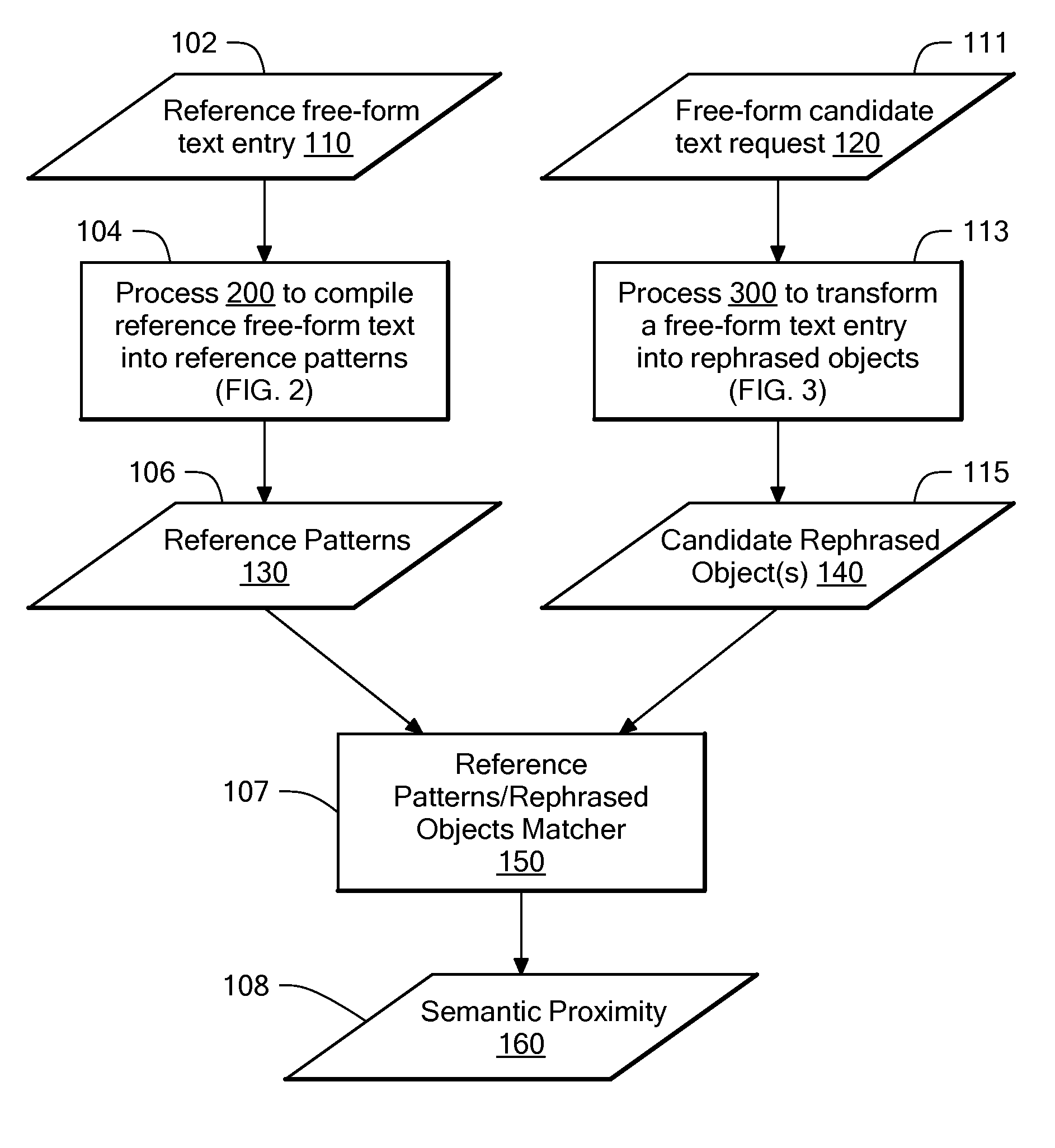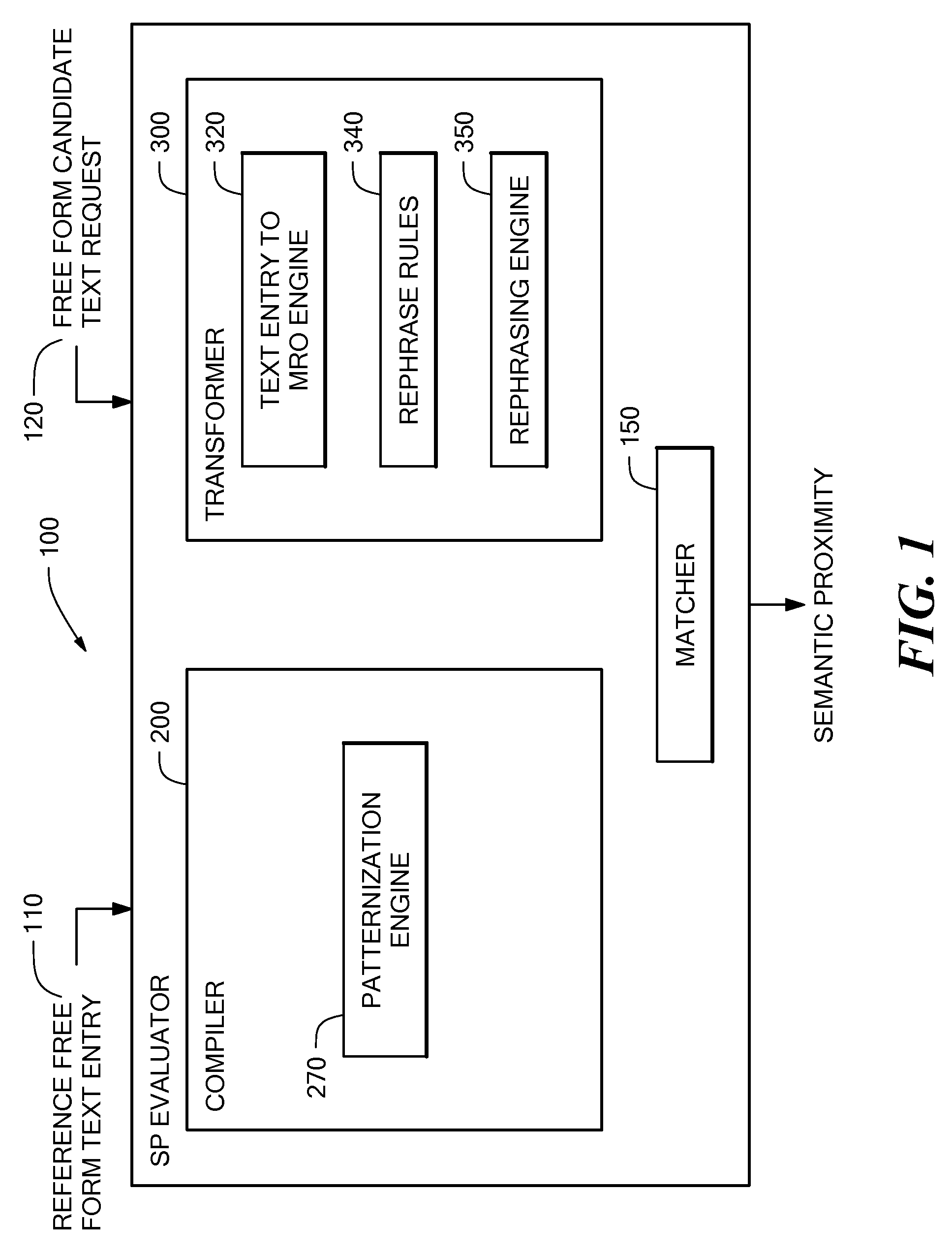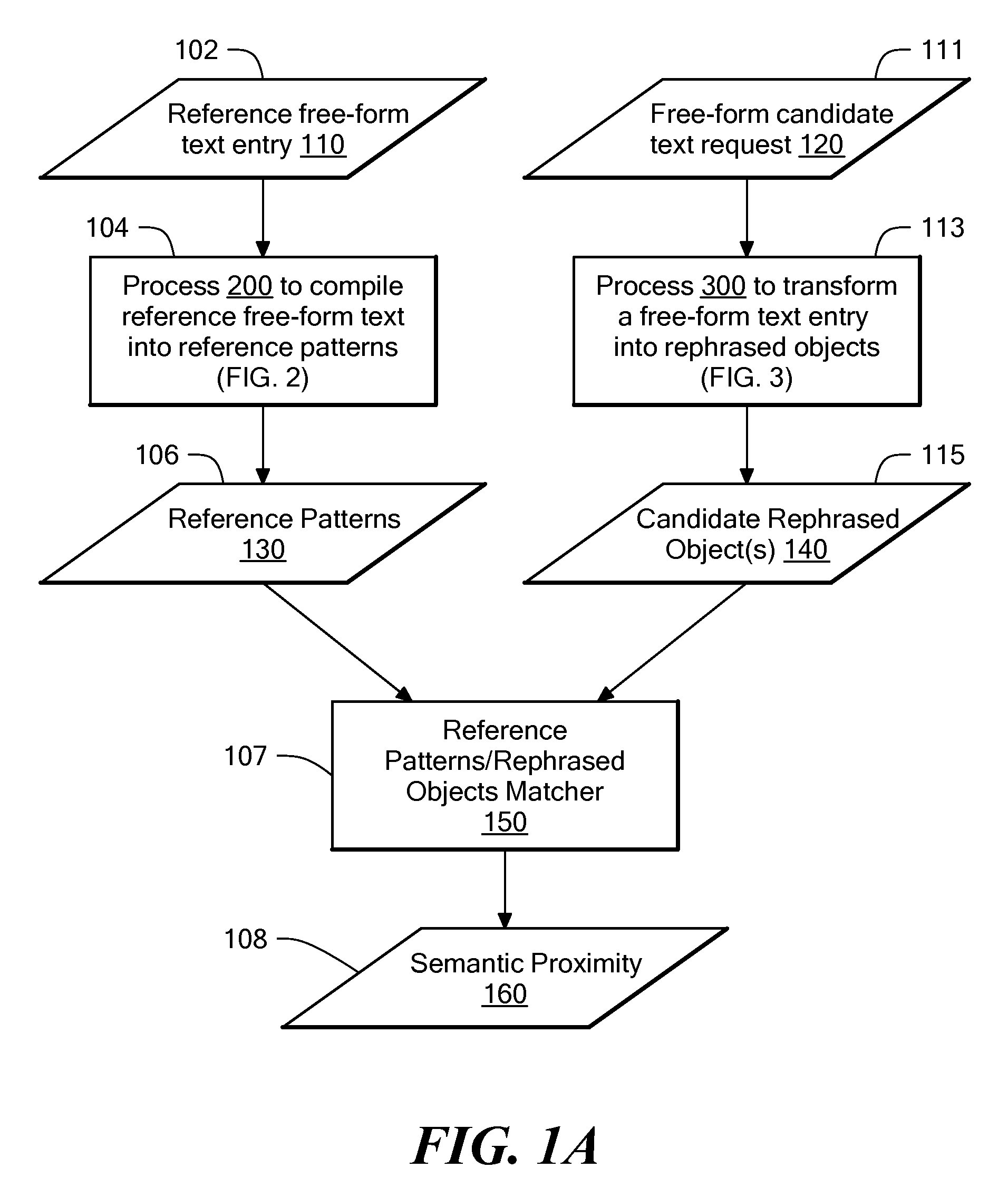Methods and apparatus for evaluating semantic proximity
a semantic proximity and method technology, applied in the field of methods and apparatus for evaluating semantic proximity, can solve the problems of significant burden, difficulty in distinguishing relevant documents in keyword approaches, and burden on the end-user to craft keyword queries or search through a large number of documents
- Summary
- Abstract
- Description
- Claims
- Application Information
AI Technical Summary
Problems solved by technology
Method used
Image
Examples
example treatment
of One Request:
[0045]“My name is Jane Doe. Can you please help me because I have lost my password”:
The request is first converted into a master rephrased object in step 330 using the text entry to main rephrased object engine in step 320. In the example and in one embodiment of the invention this would be:
[0046]
{ analyzed_string=“My name is Jane Doe. Can you please help mebecause I have lost my password?” proximity=“100”}
This master rephrased object in step 330 is run against a series of rephrase rules in step 340. In the example and in one embodiment of the invention, where the proper rephrase rules are present, this new rephrased object would be generated:
[0047]
{ analyzed_string=“Can you please help me because I have lost my password?” proximity=“100” name=“Jane Doe”}
In this example the particular rephrase rule that was applied left the proximity unchanged, considering that no relevant information was lost in the conversion from the first rephrased object to the new one. The evalu...
example
[0058]
Rephrased object={analyzed_string=“My password.” proximity=“70”name=“Jane Doe” user_is_polite=“true”}Derived “pattern” = “My password.” with a score of “70”
[0059]One limitation of this method is that it doesn't allow for a lot of variety in the wording of each component of the string. It also doesn't take advantage of the rest of the information stored in the rephrased object.
[0060]As described above, the candidate free-form text request 120 (FIG. 1) is analyzed into candidate rephrased objects 140 after processing (FIG. 3) by the transformer process 300 using the rephrase rules 340 applied by the rephrasing engine 350. The rephrase rules 340 can either be the same or be different from the rephrase rules applied to the reference free-form text entries 110.
examples
Coverage Examples
[0061]This example illustrates how the inventive method significantly increases the number of recognized user requests for each reference sentence (the coverage of each reference sentence).
Reference Question+Answer:
[0062]Q: What is the address of your offices in California?[0063]A: Our California offices are located at 111 W Evelyn St . . .
[0064]In one embodiment of the invention, with the appropriate set of rules, the reference sentence above could be analyzed into the following set of rephrased objects, where SP2R is the semantic proximity of a rephrased object to the reference, calculated using one of the techniques described above:
[0065]
Reference rephrased objectsReference textInformationSP2RWhat is the addressWhat is the address of your offices in100of your offices inCalifornia?California?Where are your offices in California?98Your offices in California.80
Those three rephrased objects would be then compiled into the pattern matching language used. The pattern m...
PUM
 Login to View More
Login to View More Abstract
Description
Claims
Application Information
 Login to View More
Login to View More - R&D
- Intellectual Property
- Life Sciences
- Materials
- Tech Scout
- Unparalleled Data Quality
- Higher Quality Content
- 60% Fewer Hallucinations
Browse by: Latest US Patents, China's latest patents, Technical Efficacy Thesaurus, Application Domain, Technology Topic, Popular Technical Reports.
© 2025 PatSnap. All rights reserved.Legal|Privacy policy|Modern Slavery Act Transparency Statement|Sitemap|About US| Contact US: help@patsnap.com



